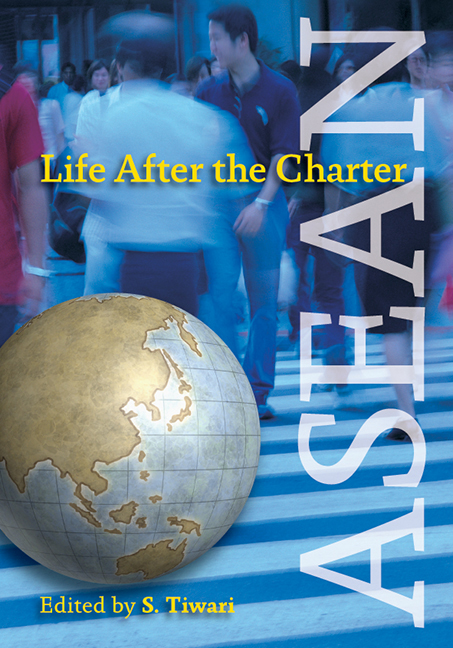Book contents
- Frontmatter
- Contents
- Foreword
- Preface
- List of Contributors
- Introduction
- 1 ASEAN Legal Personality under Its New Charter – Its Nature, Meaning and Implications: Status of the Work and Issues Involved
- 2 Does ASEAN Exist? The Association of Southeast Asian Nations as an International Legal Person
- 3 Life in ASEAN After the Entry into Force of the ASEAN Charter: Implications and Follow-ups
- 4 Translating the Design into a Bloc: The Domestic Implementation of the ASEAN Charter
- 5 ASEAN Trade in Goods Agreement (ATIGA)
- 6 The ASEAN Comprehensive Investment Agreement 2009: Its Objectives, Plans and Progress
- PRIVATE SECTOR PERSPECTIVES
- Index
3 - Life in ASEAN After the Entry into Force of the ASEAN Charter: Implications and Follow-ups
Published online by Cambridge University Press: 21 October 2015
- Frontmatter
- Contents
- Foreword
- Preface
- List of Contributors
- Introduction
- 1 ASEAN Legal Personality under Its New Charter – Its Nature, Meaning and Implications: Status of the Work and Issues Involved
- 2 Does ASEAN Exist? The Association of Southeast Asian Nations as an International Legal Person
- 3 Life in ASEAN After the Entry into Force of the ASEAN Charter: Implications and Follow-ups
- 4 Translating the Design into a Bloc: The Domestic Implementation of the ASEAN Charter
- 5 ASEAN Trade in Goods Agreement (ATIGA)
- 6 The ASEAN Comprehensive Investment Agreement 2009: Its Objectives, Plans and Progress
- PRIVATE SECTOR PERSPECTIVES
- Index
Summary
This chapter explores how the ASEAN Charter has changed or will change ASEAN in four areas: (1) democracy; (2) human rights cooperation; (3) becoming a more rules-based organization; and (4) organizational structure. It will not attempt to examine how the Charter is going to change the member states of ASEAN. That important but highly sensitive question will have to be addressed by each member state concerned.
DEMOCRACY IN ASEAN
As an inter-governmental organization, ASEAN is actually very democratic. Just look at the following evidence: sovereign equality as one of the principles (Article 2, Paragraph 2a of the Charter); every member state is equal in representation and participation in ASEAN; annual rotation of the ASEAN chairmanship; no weighted voting right or veto power; decision-making by consultation and consensus; and equal contribution to the annual operational budget of the ASEAN Secretariat, etc.
Sovereign equality begets non-interference. But non-interference cannot be absolute when a state joins a regional grouping like ASEAN and takes part in its community-building endeavour. Hence the Charter includes two new principles: “shared commitment and collective responsibility in enhancing regional peace, security and prosperity” (Article 2, Paragraph 2b) and “enhanced consultations on matters seriously affecting the common interest of ASEAN” (Article 2, Paragraph 2g). All the principles in Article 2 must be accepted and upheld as a whole set. No member state can pick and choose to highlight some principles and ignore the rest.
Unlike the EU, ASEAN has never prescribed any political criteria of its membership. The Charter's Article 6 on Admission of New Members merely lists the following: (a) geographical location in Southeast Asia; (b) recognition by all ASEAN member states; (c) agreement to be bound and to abide by the Charter; and (d) ability and willingness to carry out the obligations of membership.
Consequently, ASEAN may be the only inter-governmental organization in the world with such amazing political diversity.
- Type
- Chapter
- Information
- ASEANLife after the Charter, pp. 45 - 65Publisher: ISEAS–Yusof Ishak InstitutePrint publication year: 2010

